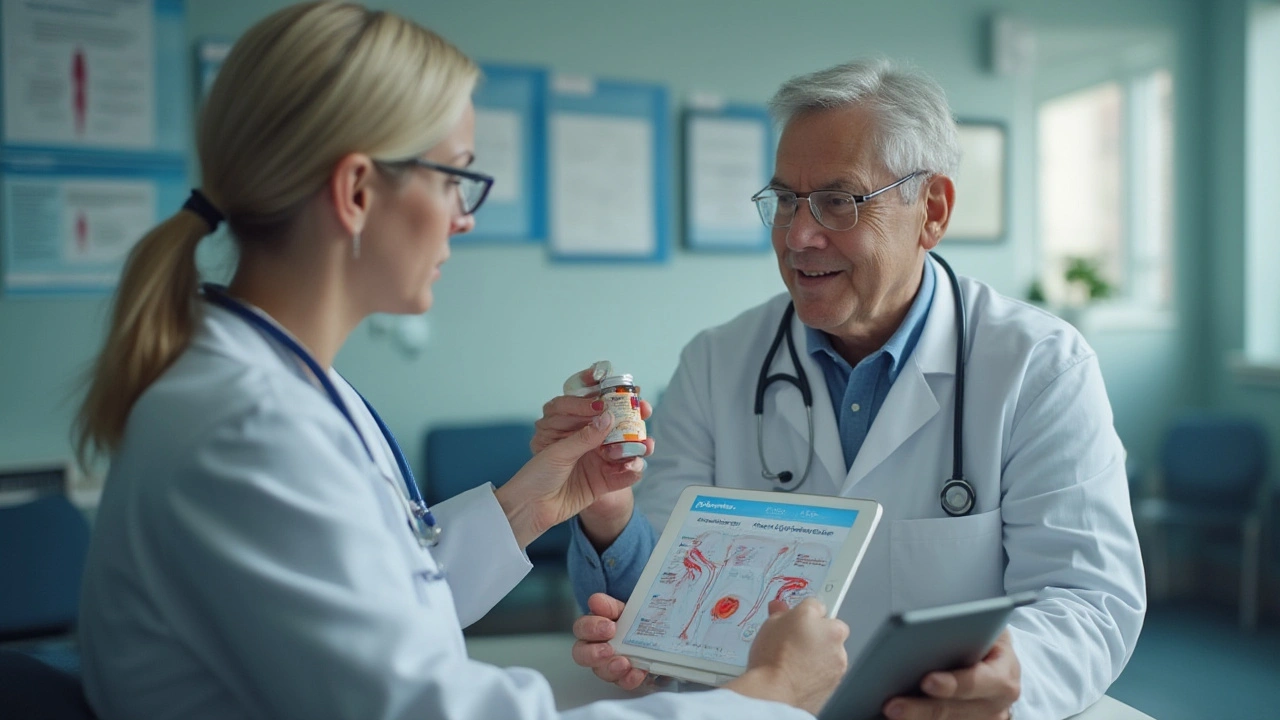- Opioids in Older Adults: Managing Falls, Delirium, and Safe Dosing Dec 22, 2025
- Losartan and COVID-19: What Science Says About This Blood Pressure Drug Oct 27, 2025
- Compare Allegra (Fexofenadine) with Alternatives: What Works Best for Allergies? Oct 30, 2025
- How Cycloserine Helps Treat Whipple’s Disease Oct 17, 2025
- Euglycemic DKA on SGLT2 Inhibitors: How to Recognize and Treat This Hidden Emergency Nov 28, 2025
CKD Treatment: Simple Steps to Protect Your Kidneys
If you or someone you love has chronic kidney disease (CKD), the first thing to know is that you can slow its progress. It isn’t a hopeless story – the right meds, food choices, and lifestyle tweaks make a real difference.
Start by understanding where you are in the CKD stages. Stage 1 and 2 usually need only monitoring, while stages 3‑5 call for stronger interventions. Your doctor will tell you the exact number, but you can also track it by looking at your blood pressure, blood sugar, and lab results.
Medication and Lifestyle Basics
Most people with CKD take a few key drugs. ACE inhibitors or ARBs help keep blood pressure low and protect the kidneys. If you have diabetes, insulin or other glucose‑lowering meds are a must, because high sugar hurts the kidneys fast.
Beyond pills, water intake matters. You don’t need to chug gallons, but drinking enough to keep urine clear (about 6‑8 glasses a day) helps flush waste. Cut back on salty foods – sodium makes the kidneys work harder. Aim for less than 2,300 mg of sodium daily; use herbs or lemon juice for flavor instead.
Protein is another big player. Too much protein forces the kidneys to filter more waste. Moderate portions of lean meat, eggs, or beans (about 0.8 g per kilogram of body weight) are usually safe. Talk to a dietitian for a personalized plan.
Exercise isn’t optional. A 30‑minute walk most days improves blood flow and lowers blood pressure. Even light strength training helps preserve muscle mass, which supports overall health.
When Dialysis Becomes Necessary
Dialysis isn’t the first line, but it’s a lifesaver when kidney function falls below 15 % (stage 5). There are two main types: hemodialysis, done at a center or at home with a machine, and peritoneal dialysis, which uses the lining of your belly to filter blood.
Choosing a method depends on lifestyle, personal preference, and medical advice. Hemodialysis typically requires three sessions a week, each lasting 3‑5 hours. Peritoneal dialysis can be done daily at home, often while you watch TV or read.
Before starting dialysis, many doctors discuss kidney transplant options. A transplant can offer better quality of life, but it needs a donor match and lifelong meds to prevent rejection.
While on dialysis, keep your diet low in potassium and phosphorus. Foods like bananas, oranges, dairy, and nuts can raise those levels and cause complications. Your kidney team will give you a detailed list.
Don’t overlook mental health. CKD can feel overwhelming, and depression is common. Talk to a therapist, join a support group, or simply share your worries with friends. Staying positive helps you stick to treatment plans.
Finally, schedule regular check‑ups. Blood work, urine tests, and blood pressure readings let your doctor adjust meds before problems get worse. Being proactive is the best way to keep CKD from stealing your health.
Bottom line: CKD treatment isn’t a mystery. Meds, a kidney‑friendly diet, regular exercise, and early conversations about dialysis or transplant keep you in control. Stay informed, stick to the plan, and you’ll give your kidneys the best chance to stay functional as long as possible.
Renagel: Uses, Dosage, Benefits, and Side Effects Explained
- Sterling Hargrave
- Jun 28, 2025
Renagel helps lower high phosphorus levels in people with chronic kidney disease. Discover how it works, tips for safe use, possible side effects, and what makes it so important.
